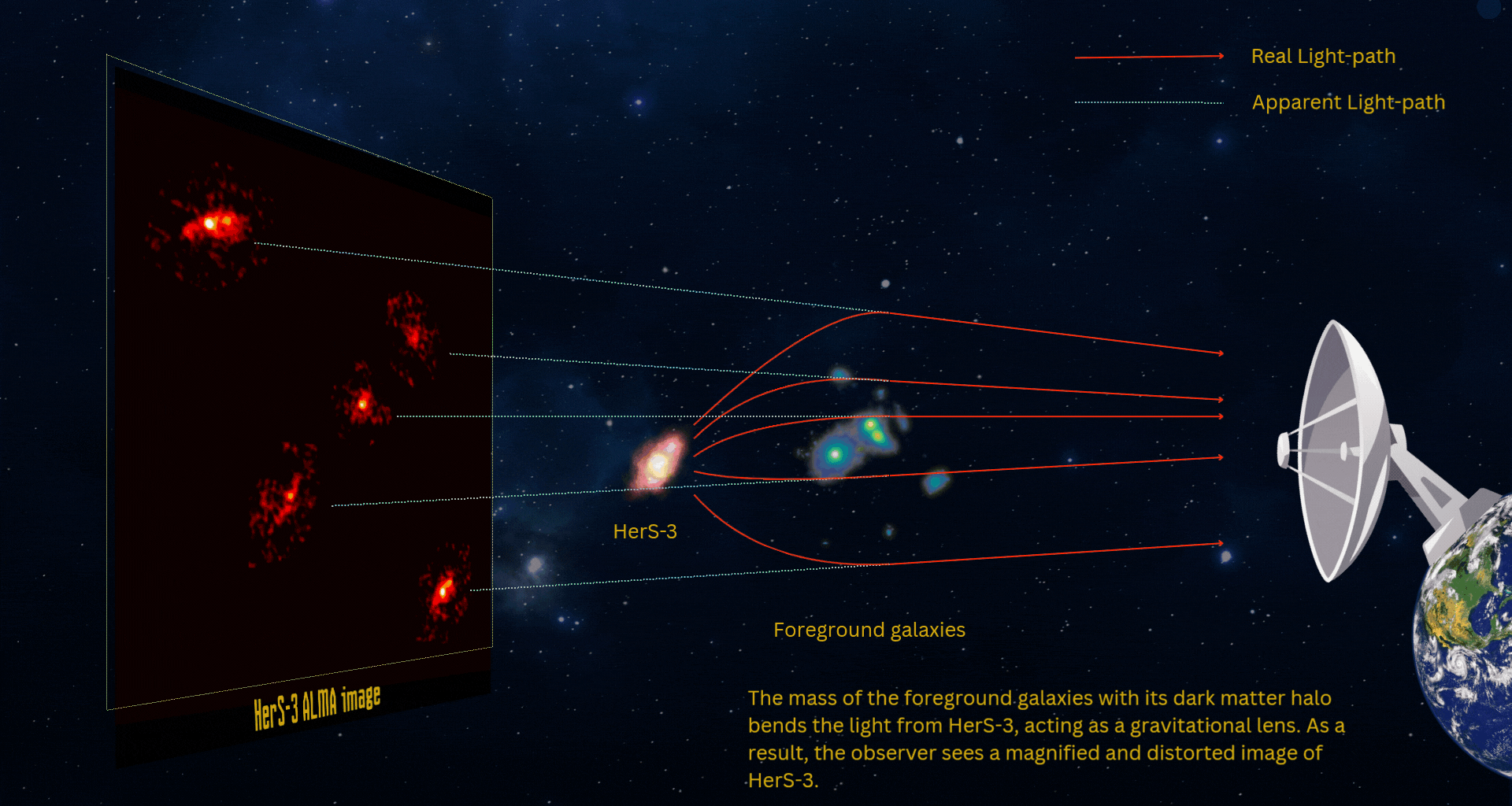Einstein Crosses are the effect of the universe’s natural telescopes. They occur when light from a distant galaxy passes by a massive foreground object, like a cluster of galaxies, that bends the very fabric of space. The gravity from these intervening objects acts like a gargantuan lens, warping the path that light follows and creating multiple images of the background source. Despite the name, Einstein didn’t specifically predict a cross, instead he proposed the concept known as gravitational lensing. His concept was published in his theory of General Relativity in 1915 but was later confirmed during the solar eclipse of 1919.
The gravity of a luminous red galaxy has gravitationally distorted the light from a much more distant blue galaxy in a phenomenon known as a gravitational lens (Credit : ESA/Hubble)
During the solar eclipse, the warping of space caused the apparent position of distant stars to shift position very slightly. The mechanics of the cross formation are slightly different. When a distant galaxy, a massive foreground object like a galaxy or galaxy cluster, and Earth align almost perfectly in space, the immense gravity of the foreground object warps the fabric space bending the light travelling from the distant source behind it. When this alignment is nearly perfect, the light takes multiple paths around the lensing object, creating four separate images of the same distant source arranged in a cross pattern around the foreground object.
A team of astronomers have recently observed such an effect when they observed a distant galaxy known as HerS-3. The galaxy is 11.6 billion years away and what makes their observation of the Einstein Cross particularly interesting is a fifth central image. This is exceptionally rare and, as it turns out, incredibly revealing about what’s causing the lensing effect. The team used a number of different telescopes including NOEMA in France, ALMA in Chile, the VLA in the USA, and the Hubble Space Telescope. Their observations identified the object bending the light was actually four massive galaxies located 7.8 billion light years from Earth, sitting at the core of a larger group containing at least ten more galaxies.
 Aerial photo from Plateau de Bure NOEMA observatory showing 9 of 12, 15 metre antennae. During observations, the antennas work as a single telescope, a technique called interferometry (Credit : IRAM-gre)
Aerial photo from Plateau de Bure NOEMA observatory showing 9 of 12, 15 metre antennae. During observations, the antennas work as a single telescope, a technique called interferometry (Credit : IRAM-gre)
However, when the researchers created computer models to simulate how these four visible galaxies would bend the light from HerS-3, they hit a problem. The current models of gravitational lensing and the crosses they created simply couldn’t reproduce the exact arrangement of the five images they were observing. Something was missing from their calculations and surprisingly, the answer lay in something we can’t see at all! By adding a massive dark matter halo which was constrained to lie at the centre of mass of the galaxy group, the models finally matched observations. From their study, they were able to estimate the mass of this invisible halo to a few trillion times the mass of our Sun.
The discovery is quite exciting because dark matter remains perhaps, one of the biggest mysteries in modern physics. We know it accounts for about 80 percent of the mass of the universe, but we still don’t really know what it is nor have we ever directly detected the particles that make it up. The challenge is that, as its name suggests, dark matter doesn’t interact with light or the electromagnetic spectrum, making it invisible to us. Thankfully, its gravitational influence can be measured by observing how it affects the motion of galaxies and, as in this case, how it bends light from distant sources.
Source : An Exceptional Einstein Cross Reveals Hidden Dark Matter

